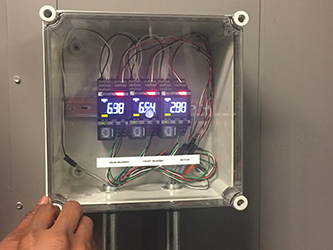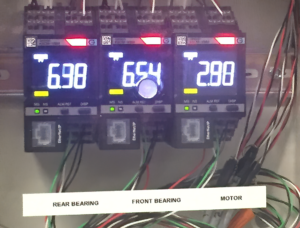
Medical facility minimizes downtime and protects valuable research with predictive maintenance
Mike Edwards
Features condition monitoring motors Omron Automation
Most public buildings rely on air handling units (AHUs) to provide a continuous supply of clean and comfortable air. In medical research facilities, they are especially critical to maintain optimal laboratory environment conditions. Medical research can be very temperature sensitive and any unplanned downtime can cause millions of dollars in damage and destroy years of research.
At one such Canadian facility, after a recent incident, the facilities management team began searching for a solution to protect valuable research, prevent a re-occurrence and eliminate problematic downtime.
The solution selected, provides live data on fan operating conditions and indicates when a fan is starting to degrade. The solution helps hospital maintenance sta. ensure 100 percent uptime for an essential system.
Solution benefits:
- Real-time visibility into the air handling unit’s condition eliminates costly, time-consuming 3rd party inspection
- Improved predictive maintenance scheduling for fans takes the burden of maintenance engineers
- 100% uptime of a critical system ensures acceptable laboratory air quality
The facility, one of Canada’s most research-intensive medical locations, was having problems with AHUs failing unexpectedly and causing issues in its 750,000 square-foot research tower.
Downtime at a medical research facility can have more than just financial implications, since airflow is critical to ensure the integrity of biomedical research material. In this specific situation, the three most critical AHUs are installed on the cooling system for the research tower, which is responsible for protecting years’ worth of temperature-sensitive biomedical research materials.
Challenge
Prior to discovering a way to prevent the AHU failures, the facility employed a third-party vendor to perform vibration analysis on a regular basis with the goal of predicting motor failures. In addition to being costly, this preventative maintenance work occurred at specific points in time and did not take into account any status information between testing dates. It also relied on skilled engineers to analyze the data and recommend maintenance timing. Using this method, it is difficult to prevent motor issues caused by degradation and the continued, unexpected downtime of the fans made it clear that a continuous monitoring solution was necessary.
For critical HVAC systems such as medical research ventilation, downtime must be avoided completely. Predictive maintenance relying solely on human observation may not always catch an impending problem in time.
To ensure thorough predictive maintenance, it is essential to use a monitoring system that can provide real-time data on the status of the system’s key components — in this case, motors and bearings on air handling units — and alert status when those components are beginning to degrade.
Solution
The facility turned to Omron Automation Canada for its predictive maintenance solution and now uses the K6CM Motor Condition Monitoring Device to perform continuous, real-time monitoring of the AHU status. The K6CM observes the acceleration, velocity and temperature of a motor to detect the early signs of degradation and indicate the need for service, repairs or replacement before a failure occurs. Threshold value settings allow technicians to now understand the motor’s maintenance timing without having to rely on an engineer interpretation.
 The facilities maintenance staff installed a total of 9 vibration sensors. Three K6CM units on each air handling unit measuring the vibration and temperature of the motor itself and front and rear bearings. One sensor on the motor would be sufficient for this particular application thanks to the sensor’s advanced sensitivity, but because the fans perform such an important function, they implemented a more comprehensive solution with sensors on the rear and front bearings to prevent unscheduled downtime.
The facilities maintenance staff installed a total of 9 vibration sensors. Three K6CM units on each air handling unit measuring the vibration and temperature of the motor itself and front and rear bearings. One sensor on the motor would be sufficient for this particular application thanks to the sensor’s advanced sensitivity, but because the fans perform such an important function, they implemented a more comprehensive solution with sensors on the rear and front bearings to prevent unscheduled downtime.
Designed to quantify the status of a three-phase induction motor, the K6CM is suitable for performing continuous, real-time monitoring of essential systems. It works by observing the motor’s current load, vibration, temperature or insulation resistance to detect early signs of degradation and indicate the need for repairs or replacement before a failure occurs.
Because the K6CM provides threshold value setting, technicians can understand the motor’s maintenance timing without depending on an engineer, adding to its value as a cost-effective, user-friendly solution.
Results
Since installation, the facility has not experienced any motor failures in its AHUs. In the event of performance degradation, the facility now has the ability to detect failures before they result in unscheduled and costly downtime. With clear visibility into the historical vibration and temperature data on each motor, they no longer rely on an incomplete snapshot in time of the data measurement from a third party. Alarms from the sensors are integrated into the building’s automation system to provide 24/7 monitoring and alarm paging to the facilities personnel.
This article was contributed by Omron Automation Canada.
For more information on the K6CM Motor Condition Monitoring Device, visit automation.omron.com/en/ca/products/family/K6CM.
Print this page